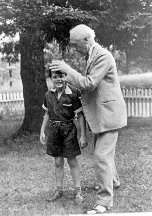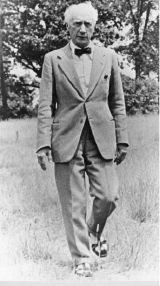An introduction to the Alexander Technique
The Alexander Technique was invented by Frederick Matthias Alexander (1869–1955). It is a process that enables people to improve their body use by peeling away bad habits and introducing good ones. Alexander realised that if you do something often enough you soon start to think that the habit pattern you have got used to is good for you even if it isn’t. He called this “faulty sensory appreciation”.
If you fold your arms now, it is likely that you will fold them in a particular way. Try folding your arms the other way around and see how it feels. The second way of folding probably feels a little odd, this is only because you may have got into a habit of always folding them the first way. This is an example of faulty sensory appreciation.
Alexander Technique uses three key principles to improve our use. They are:
• The Primary Control
• Inhibition
• Directions
Primary Control
The relationship between the Head and the Neck is vital to improving your use of your body. Clients learn to improve their use by visualising the head freely poised on the top joint of the spine and the spine lengthening. Improving the Head Neck relationship is the reason why people generally associate the Technique with improved posture and balance.
Posture is how we support and balance ourselves against the pull of gravity while we use our bodies in our everyday lives. Natural postural reflexes help enable this support and balance to happen without undue effort, provided we have the ability to allow these reflexes to work freely. These mechanisms can easily be interfered with. Alexander Technique lessons help to use these natural mechanisms more effectively.
Inhibition
The term here is nothing to do with the lay term of being inhibited. In the Alexander Technique world it is a very positive term and refers to a habitual response that a person has got used to doing. Alexander Teachers help clients to introduce a thought process which enables a person to “stop, think and act”, thus breaking the old habit pattern and introducing a better one.
Directions
Directions are the opposite to inhibition. It is a way of using the mind to improve body use. When you go for lessons your Alexander Technique teacher will introduce the key directions gradually. They are easy to use once a person has become familiar with them and more effective through repetition.



